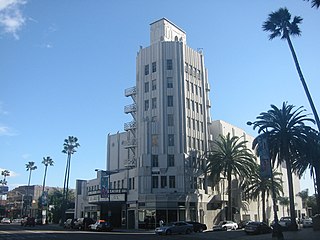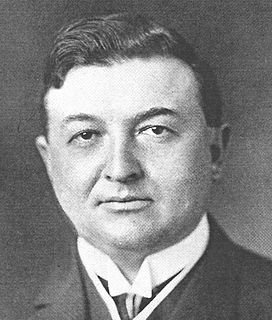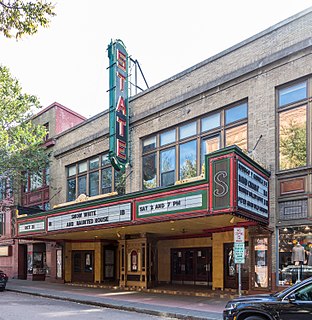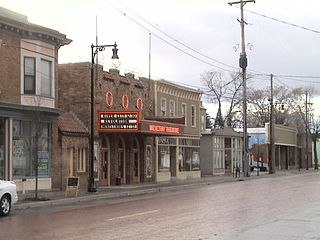
The Cabot Performing Arts Center is located at 286 Cabot Street in Beverly, Massachusetts.

The Cabot Performing Arts Center is located at 286 Cabot Street in Beverly, Massachusetts.
For more than ninety years the Cabot Street Cinema Theatre has been an important part of the Boston's North Shore community. Harris and Glover Ware, two brothers and former vaudeville musicians from Marblehead, Massachusetts, built the Cabot eight years after the construction of their first Beverly theater, the Larcom Theatre. The Cabot was originally known as the Ware Theatre, [1] [2] when it opened in 1920 and was described as having “the most impressive auditorium of its size east of New York.” Erected with ballyhoo and great expense in 1920, it was immediately Beverly’s grandest playhouse. Large enough to accommodate any kind of entertainment, from silent pictures to opera, the Cabot was also grand enough—with its frescoes, filigrees, golden dome, and full balcony—to rival big-city show palaces. When it opened, announcements for the gala premier of the theatre boasted of a "$50,000 Austin Pipe Organ", which would be $676,000 in 2021 dollars. [2]
The Cabot's architects were Funk and Wilcox, who had already made a name for themselves with the Athenaeum and the Strand Theatre (Dorchester, Massachusetts). Back then, movie palaces included fully equipped stages because film showings were often preceded by live acts—vaudeville. They were also built with orchestra pits for musicians who accompanied the silent films and the stage production.
Out of the 20,000 movie palaces entertaining America in 1920, the National Trust for Historic Preservation estimates that less than 250 remain. Up until January 2014, the Cabot maintained a grand tradition of elegant movie-going and live stage entertainment thanks to the Cabot's founding director Marco the Magi (Cesareo Pelaez, 1932 - 2012). He stated, “The total effect of a motion picture is conditioned by the environment in which it is shown.” Marco selected the Cabot’s “films worth seeing more than once;” he directed its attentive tuxedoed ushering staff, and designed its interior decor, including the fresh cut flower bouquets. Raised in the grand tradition from which the Cabot was born, he allowed movie-going to be an occasion where a community gathers to be entertained in an elegant environment.
Purchased in 1960 by Loews, it was renamed the Cabot Cinema. [3]
In 1976, it was purchased by Le Grand David. Live performances by Le Grand David and his own Spectacular Magic Company were shown from February 1977 through May 2012. During that time the resident company also showed feature films "worth seeing more than once." On May 15, 2013, the owners/Le Grand David company announced that the Cabot was for sale.
After Le Grand David stopped performing, the theater continued to show movies until it closed in the winter of 2012/13. [1]
In the summer of 2014, the theater was sold, and has remained a venue for live performances and cinema. In November 2014, it reopened as a performing arts center, "The Cabot", offering a mixture of film, music, and performances. [4] In 2015, Casey Soward was named Executive Director of theater. [5]
In 2020, The Cabot will celebrate their centennial anniversary. [6] Restoration of the theater's lobby is planned during the summer of 2020. [7] The renovation is the latest in a series of projects that have been undertaken since 2014; these have included new seats, sound and lighting systems, HVAC, and a bar called Streetside.

Beverly is a city in Essex County, Massachusetts, and a suburb of Boston. The population was 42,670 at the time of the 2020 United States Census. A resort, residential, and manufacturing community on the Massachusetts North Shore, Beverly includes Ryal Side, Beverly Farms and Prides Crossing. Beverly is a rival of Marblehead for the title of being the "birthplace of the U.S. Navy".

The North Shore is a region in the U.S. state of Massachusetts, loosely defined as the coastal area between Boston and New Hampshire. The region is made up both of a rocky coastline, dotted with marshes and wetlands, as well as several beaches and natural harbors. The North Shore is an important historical, cultural, and economic region of Massachusetts. The southern part of the region includes several of Boston's densely populated inner suburbs. At the center of the North Shore lies its most prominent geographic feature, Cape Ann, with numerous small fishing towns, and at the northern end lies the Merrimack Valley, which was a major locus of the Industrial Revolution in the United States.

A movie palace is any of the large, elaborately decorated movie theaters built between the 1910s and the 1940s. The late 1920s saw the peak of the movie palace, with hundreds opened every year between 1925 and 1930. With the advent of television, movie attendance dropped, while the rising popularity of large multiplex chains signaled the obsolescence of single-screen theaters. Many movie palaces were razed or converted into multiple-screen venues or performing arts centers, though some have undergone restoration and reopened to the public as historic buildings.

Thomas White Lamb (1871–1942) was a Scottish-born, American architect. He was one of the foremost designers of theaters and cinemas in the 20th century.

The Kings Theatre, formerly Loew's Kings Theatre, is a live performance venue in the Flatbush neighborhood of Brooklyn, New York City. Opened by Loew's Theatres as a movie palace in 1929 and closed in 1977, the theater sat empty for decades until a complete renovation was initiated in 2010. The theater reopened to the public on January 23, 2015 as a performing arts venue. It was listed on the National Register of Historic Places on August 22, 2012.

The Warner Grand Theatre is a historic movie palace that opened on January 20, 1931. It is located in San Pedro, Los Angeles, California, at 478 West 6th Street.

The Saban Theatre is a historic theatre in Beverly Hills, California, formerly known as the Fox Wilshire Theater. It is an Art Deco structure at the southeast corner of Wilshire Boulevard and Hamilton Drive designed by architect S. Charles Lee and is considered a classic Los Angeles landmark. The building was listed on the National Register of Historic Places on April 3, 2012.

Keith-Albee Theatre is a performing arts center located along Fourth Avenue in downtown Huntington, West Virginia in the United States of America. The Keith-Albee was named after the Keith-Albee-Orpheum Corporation, one of the leading vaudeville performance chains at that time, to convince the directors of Keith-Albee-Orpheum to make the Keith-Albee a regular stop. At the time of its construction, The Keith Albee was the second largest theater in the U.S. It is listed on the National Register of Historic Places as part of the Downtown Huntington Historic District, and is currently being restored as a performing arts center.

Heinz Hall is a performing arts center and concert hall located at 600 Penn Avenue in the Cultural District of Pittsburgh, Pennsylvania. Home to the Pittsburgh Symphony Orchestra (PSO) and the Pittsburgh Youth Symphony Orchestra, the 2,676 seat hall presents about 200 performances each year. Originally built in 1927 as Loew's Penn Theatre, the former movie palace was renovated and reopened as Heinz Hall in 1971.

John Adolph Emil Eberson was a Ukrainian American architect best known for the development and promotion of movie palace designs in the atmospheric theatre style. He designed over 500 theatres in his lifetime, earning the nickname "Opera House John". His most notable surviving theatres in the United States include the Tampa Theatre (1926), Palace Theatre (1928), Majestic Theatre (1929) and Paramount Theatre (1929). Remaining international examples in the atmospheric style include both the Capitol Theatre (1928) and State Theatre (1929) in Sydney, Australia, The Forum and Le Grand Rex.
On February 20, 2012, Le Grand David and His Spectacular Magic Company celebrated its 35th anniversary. The company was then the longest consecutively running stage magic show in the world, according to Guinness World Records. Marco the Magi started the show in the 1970s. The family-oriented stage magic show ran most Sundays at the Cabot Street Cinema Theatre and some Thursdays at the Larcom Theatre in Beverly, Massachusetts through the Spring of 2012.

The Larcom Theatre is a 600-seat auditorium located at 13 Wallis Street in Beverly, Massachusetts and offers live music, theatrical productions, ballet, and comedy.

An atmospheric theatre is a type of movie palace design which was popular in the late 1920s. Atmospheric theatres were designed and decorated to evoke the feeling of a particular time and place for patrons, through the use of projectors, architectural elements and ornamentation that evoked a sense of being outdoors. This was intended to make the patron a more active participant in the setting.

The Broadway Theater District in the Historic Core of Downtown Los Angeles is the first and largest historic theater district listed on the National Register of Historic Places (NRHP). With twelve movie palaces located along a six-block stretch of Broadway, it is the only large concentration of movie palaces left in the United States. The same six-block stretch of Broadway, and an adjacent section of Seventh Street, was also the city's retail hub for the first half of the twentieth century, lined with large and small department stores and specialty stores.

The Hippodrome Theatre is a theater in Baltimore, Maryland.

State Theatre of Ithaca is a historic, 1600-seat theatre located at Ithaca in Tompkins County, New York that hosts various events from bands, to plays, to comedy acts, to silent films, and more.

The Orpheum Theater opened in Champaign, Illinois in 1914 on the site of a vaudeville theater built in 1904. Designed by the Architectural firm Rapp & Rapp, the Orpheum was built to accommodate both live vaudeville performances and the projection of film. After a series of renovations and changes of ownership, the Orpheum screened its final film in 1986.

The Victory Theatre is a theater in Holyoke, Massachusetts. It was built in 1920 by the Goldstein Brothers Amusement Company. The architecture is in the Art Deco style and is considered the last of its type between Boston and Albany. Closed for nearly four decades, as of November 2018 its owners, the Massachusetts International Festival of the Arts (MIFA), were in the process of obtaining permits and meeting construction contractors for renovation; by January 2019 the MIFA Victory Theatre group had its final architectural plans approved by the city planning board, along with construction fencing and signage special permits, with a goal of opening the theater by its 100th anniversary on December 20, 2020.

Wealthy Theatre is a historic movie theatre and performance center in Grand Rapids, Michigan. It is currently operated by the Grand Rapids Community Media Center, a non-profit corporation. Wealthy Theatre is a mixed-use facility, capable of hosting live music, film, theatre and dance.

At the advent of the 20th century, the city of Portland, Oregon, was among the first on the United States West Coast to embrace the advent of the silent and feature film. The city's first movie palace, the Majestic Theatre, opened in 1911. By 1916, Portland had "the finest array" of movie houses on the West Coast relative to its population, pioneering venues dedicated exclusively to screening films. The popularization of the sound film in the early 1920s resulted in another boom of new cinemas being constructed, including the Laurelhurst, the Hollywood Theatre, and the Bagdad Theatre, the latter of which was financed by Universal Pictures in 1926.
Coordinates: 42°33′5.02″N70°52′43.59″W / 42.5513944°N 70.8787750°W